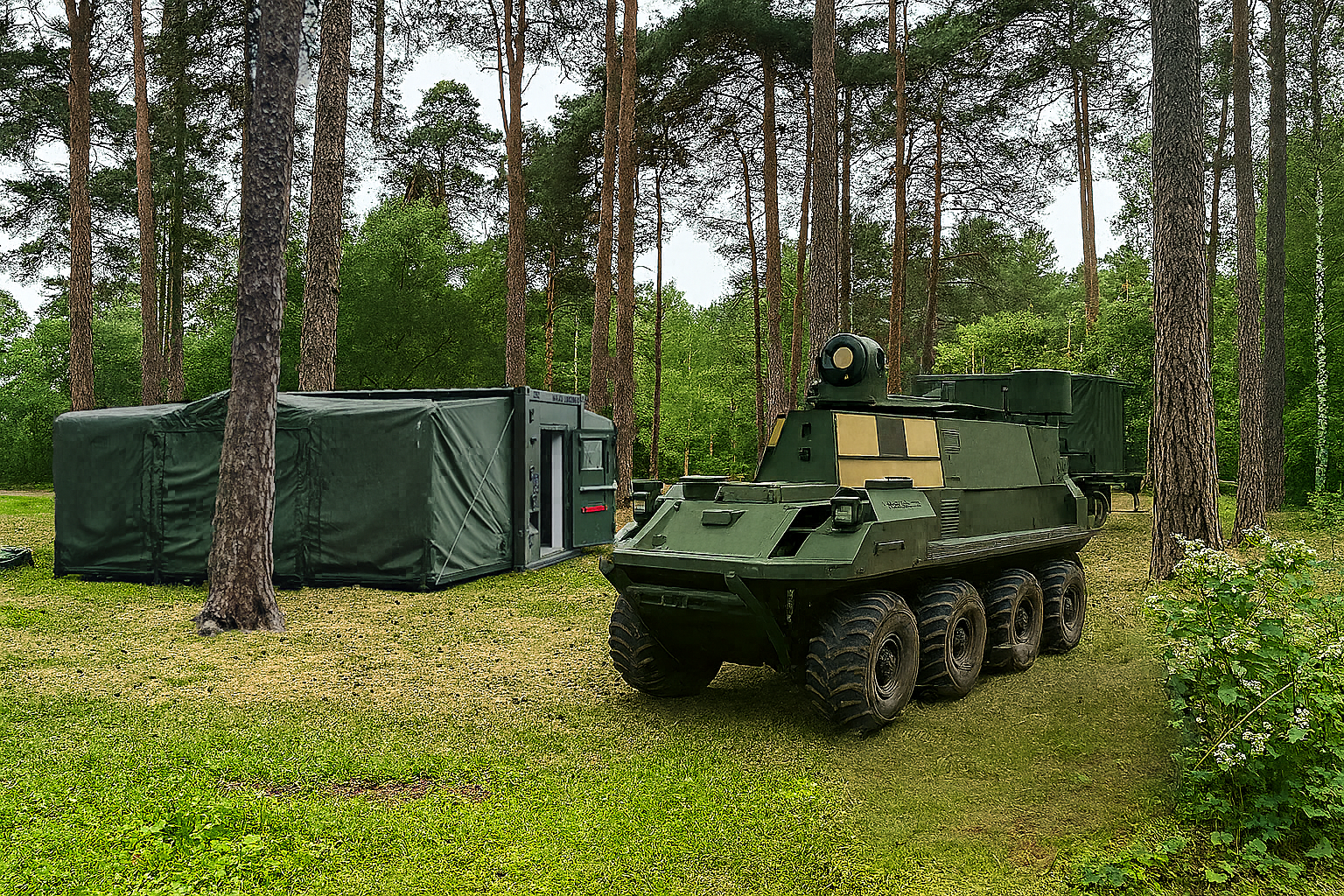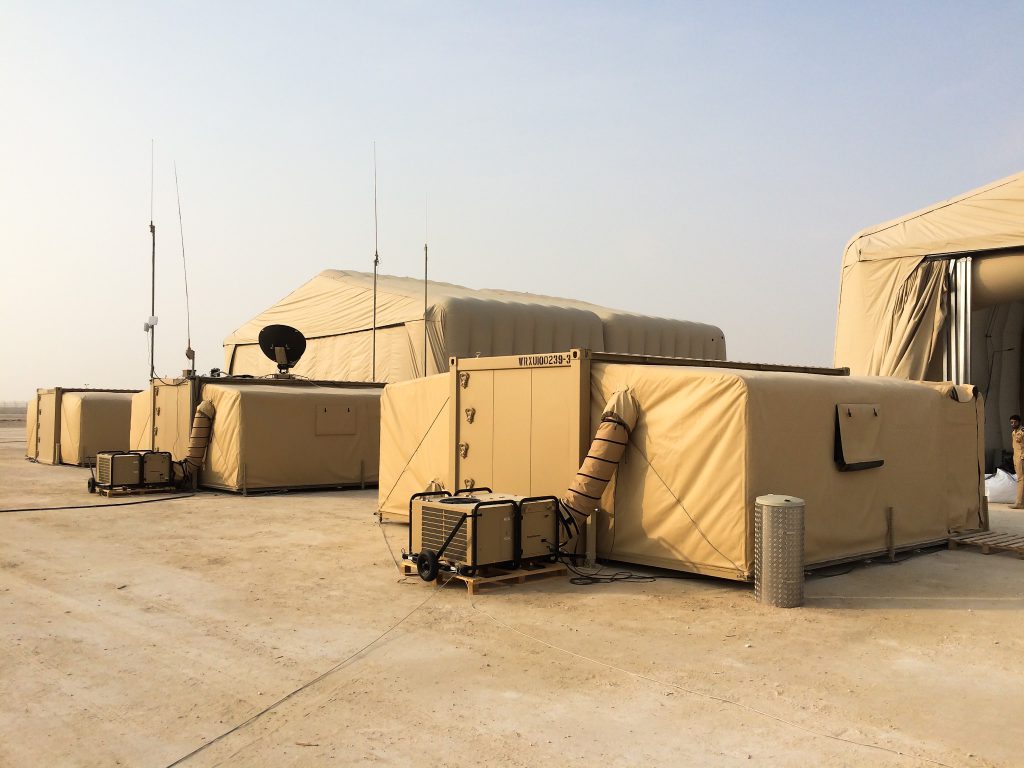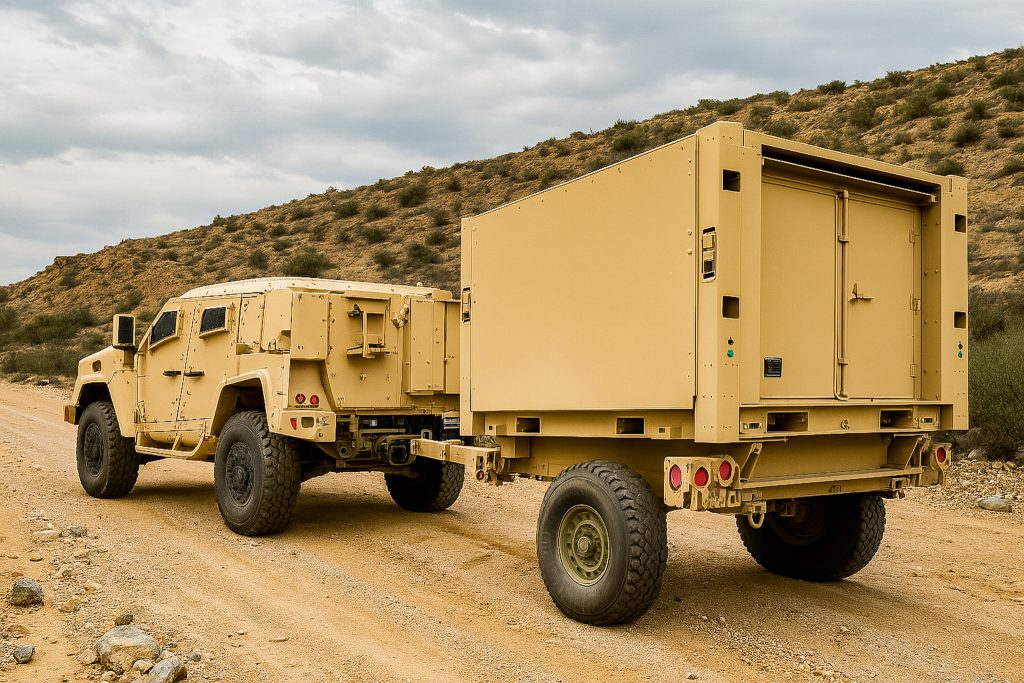The British Army’s RAS trials demanded fast, resilient, plug-and-play command nodes to supervise autonomous ground and air vehicles while supporting rapid experimentation and decision-making. Weatherhaven’s MECC and TRECC filled this role, giving teams deployable, scalable spaces for C2, data fusion and mission planning at the tactical edge—exactly where the British Army emphasises experimentation, a resilient digital backbone, and accelerated decision-action cycles for Human-Machine Teams. Integrating such nodes aligns with the RAS approach to gain tempo, mass, and reduced cognitive load.
Success also came from modularity. MECC/TRECC nodes link to other containers and soft-wall shelters to build layered HQs—forward TRECC hubs supervising vehicles, feeding a larger MECC fusion cell—with standardised interfaces across power, networking, and environmental control. That architecture supported the Army’s iterative experimentation cycles and capability headmarks, accelerating lessons from trials like AWE20 into scalable force designs for 2025–2035 Human-Machine Teams (HMT) and autonomous support functions.
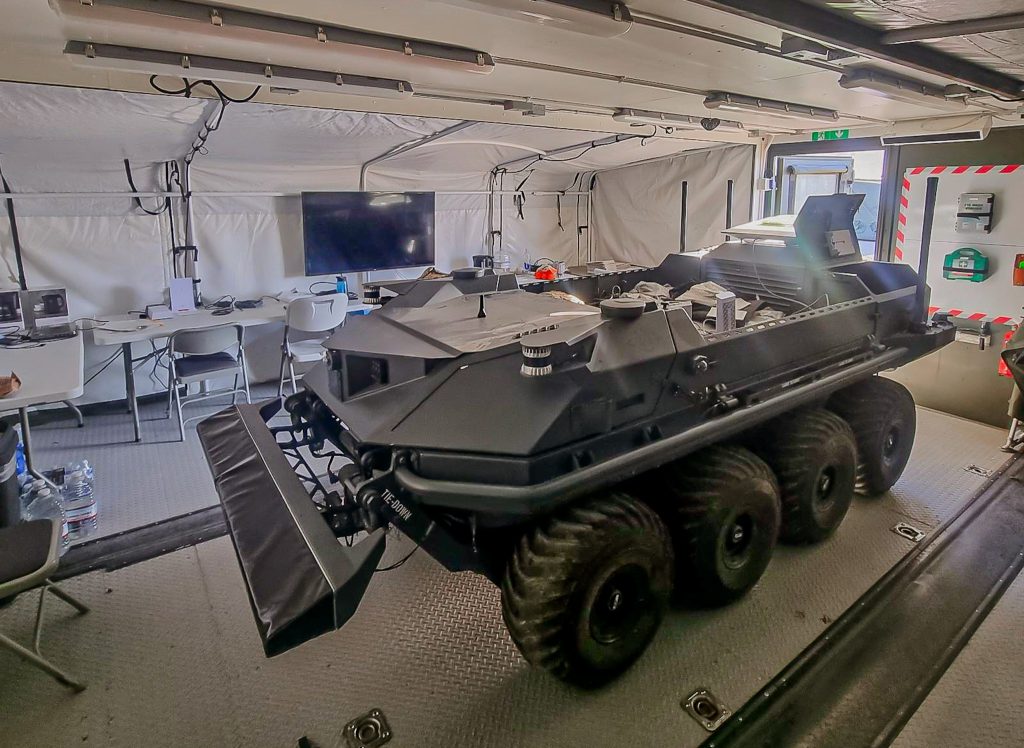
MECC provided spacious, protected, quickly deployable autonomous vehicle headquarters capability
The MECC is a fully assembled ISO-container shelter that expands to triple its footprint in minutes, creating a stable, equipment-ready command space without exposing electronics during setup. Its central core stores mission systems, power distribution and interfaces, so staff can roll off and start supervising autonomous platforms immediately. Similarly to Exercise Wessex Storm, where a MECC supported forward HQ Agile requirements—demonstrating how rapidly a secure command post can be established for robotic control and battle management under field conditions.

TRECC delivered ultra-mobile forward nodes for robotic control operations effectiveness
For the most forward, mobile autonomy hubs, units used TRECC: an extended-height, width-expanding container designed for efficient transport and rapid setup across helicopter, vehicle, and sealift modes. The trailer-mounted TRECC-T deploys in under five minutes with two personnel, letting operators establish a robotic control point between halts without tools—ideal for dispersed RAS tactics. Its selection as deployable infrastructure for AWE20’s Agile C3 focus shows suitability for modern autonomous C2 concepts.
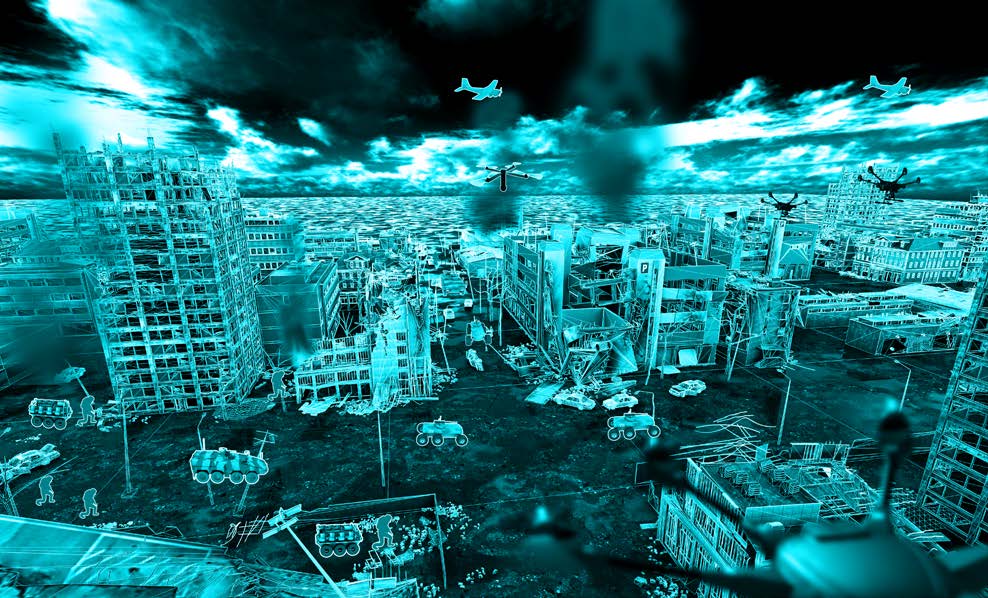
Shelters underpinned RAS digital backbone and rapid decision-action cycles advantage
Both shelters embodied the Army’s “sensors-deciders-effectors” vision: protected power, networking, and human-machine interfaces in a compact node that could plug into the tactical network. That enabled faster, better decisions and action at the edge—central to gaining tempo in RAS operations—while keeping human control meaningful. By providing robust, repeatable workspaces for autonomy software, comms, and mission systems, MECC/TRECC bridged experimentation and operations, supporting the Army’s discover-develop-deliver model during trials.
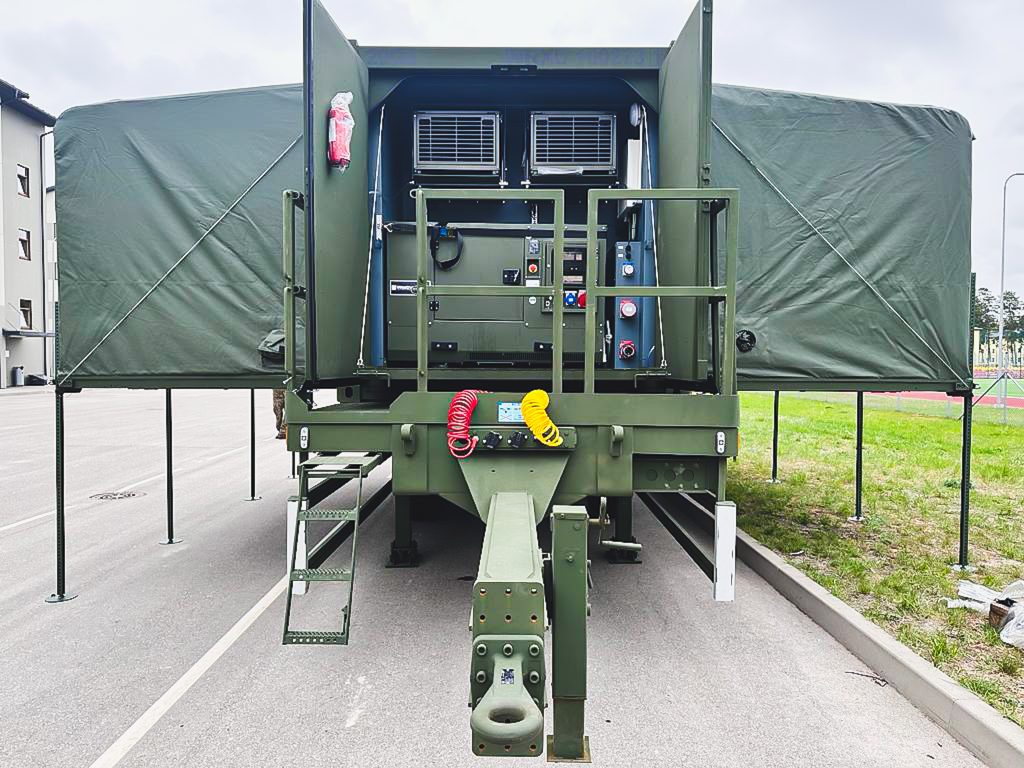
Protected power, HVAC, and integration safeguarded sensitive autonomy equipment interfaces
Weatherhaven’s command-and-control configuration keeps equipment inside the shelter’s core during transport, setup, and teardown, protecting sensitive autonomy processors, radios, and displays from weather and dust while slashing setup risk. MECC/TRECC can be pre-wired with electrical distribution, HVAC and mechanical systems, giving stable thermal and power conditions that autonomy stacks require for reliable perception, control, and datalinks. This turnkey, mission-ready integration meant crews could focus on managing UGV/UAS tasking and safety cases, not fighting the infrastructure.
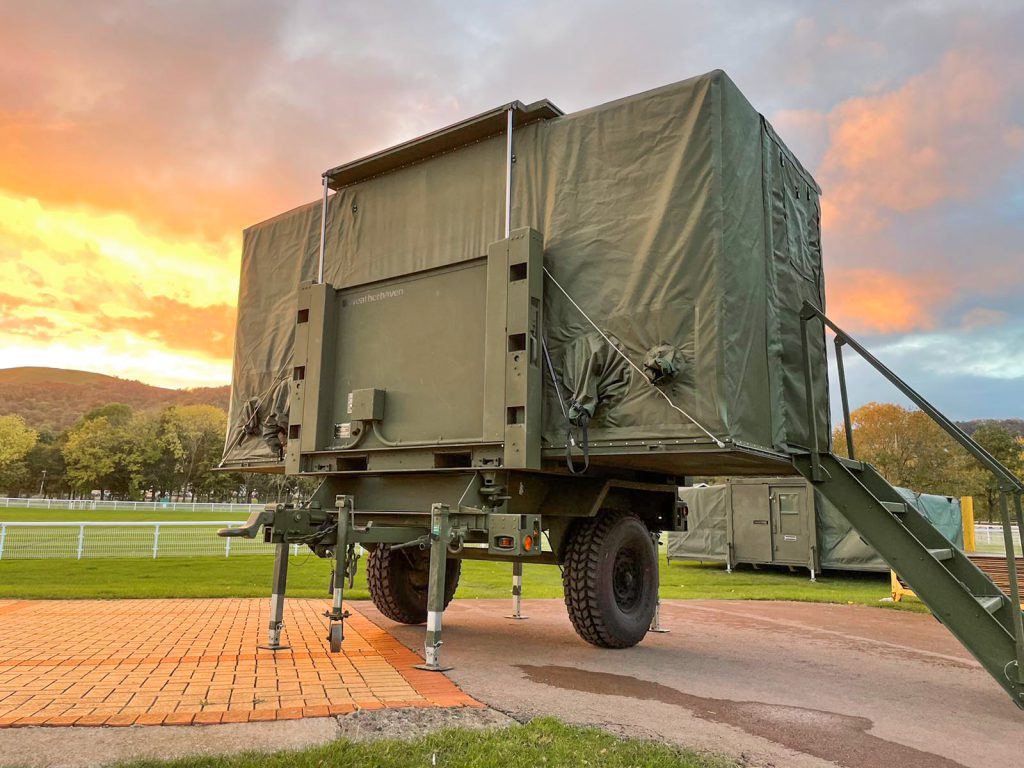
Exceptional logistics enabled dispersed RAS operations with minimal footprint teams
As ISO/CSC-certified containers, MECCs move by air, land, and sea, can be underslung by helicopter, stacked, and deployed by small teams in roughly fifteen minutes—ideal for leapfrogging C2 to keep pace with autonomous formations. TRECC-T pushes mobility further: two people, sub-five-minute deployment, expanding workspace from a low-profile trailer for convoy or light-forces usage. Together they enabled dispersed, survivable, small-signature command posts that matched RAS concepts of distributed control and rapid re-tasking.

Please get in touch if you would like to know more about our Military or Commercial shelter and camp solutions.
